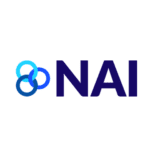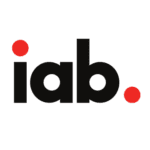How to Keep Your Site Safe While Using a Marketing Pixel
- Implement measures such as content security policies and subresource integrity to prevent unauthorized access or tampering with pixel code.
- Ensure that all data transmitted through pixels is encrypted and transmitted securely over HTTPS.
- Test the pixel’s impact on site speed and efficiency.
Safety is always the big question when it comes to being online as both a customer and a business – and the moment you say the word “pixel,” “analytics,” or “intelligence,” questions start. The good news is that using marketing pixels on your website can be safe as long as you take necessary precautions to protect your users’ privacy and data, and that plenty of reputable sources have covered this same topic!
In short, marketing pixels are a small piece of code that allows you to track user behavior on your website, such as page views, clicks, and conversions. This information can be valuable for optimizing your marketing campaigns and improving the user experience – for example, your informatics dashboard under Google or Facebook Ads are part of the pixel system.
However, if you use marketing pixels that collect personally identifiable information (PII) without obtaining user consent, you may be violating privacy laws and putting your users at risk. For example, if you collect users’ names, email addresses, or other sensitive information through the pixel, you may be exposing them to identity theft or other malicious activity.
To ensure that your use of marketing pixels is safe and compliant with privacy regulations, you should:
- Obtain user consent: Clearly disclose your use of the pixel and give users the option to opt-out of tracking.
- Minimize data collection: Only collect the data that you need for your marketing purposes and avoid collecting sensitive PII.
- Secure data storage: Ensure that any data collected through the pixel is stored securely and protected from unauthorized access.
- Comply with regulations: Stay up to date with privacy regulations in your region and follow best practices for data privacy and security.
By taking these steps, you can use a marketing pixel safely and responsibly to improve your marketing efforts and protect your users’ privacy. It is safe to say that marketing data can be legally used for a variety of purposes, but the specific use cases may depend on applicable laws and regulations in your jurisdiction.
Some common examples of legal uses of marketing data include:
- Targeted advertising: Using data about a user’s demographics, interests, and behavior to serve them relevant ads.
- Personalization: Customizing content, offers, and communications to better match a user’s preferences and needs.
- Analytics: Analyzing data to better understand user behavior, identify trends, and optimize marketing strategies.
- Research: Conducting research and market analysis to improve products, services, and marketing strategies.
- Compliance: Maintaining compliance with applicable laws and regulations, such as data privacy laws and marketing regulations.
Make sure you’re taking action to protect users as well, starting with your site:
- Use HTTPS: HTTPS is a secure version of HTTP that encrypts the data transmitted between your website and the customer’s browser. Implementing HTTPS is essential for securing any sensitive information that customers may share on your website. (Most platforms, including Intersect’s pixel, use HTTPs to transfer information.)
- Install SSL/TLS Certificates: Secure Sockets Layer (SSL) and Transport Layer Security (TLS) certificates help to encrypt data and provide a secure connection between your website and the customer’s browser. Install a trusted SSL/TLS certificate on your website to provide customers with a secure browsing experience. (These certificates can often be purchased with your domain registrar like GoDaddy and applied automatically.)
- Keep software up to date: Keep your website’s software, including the content management system (CMS), plugins, and extensions, up to date to minimize the risk of security vulnerabilities. Work with your domain registrar, site management company, or frequently check your WordPress backend to do this.
- Use strong passwords: Encourage customers to create strong passwords when setting up an account on your website. Implement password strength requirements to ensure that customers create passwords that are difficult to guess.
- Implement two-factor authentication (2FA): Two-factor authentication adds an extra layer of security to your website by requiring customers to provide a second form of identification, such as a code sent to their mobile device, in addition to their password.
- Use web application firewalls (WAF): A web application firewall is a security tool that monitors and filters traffic to your website. It can block malicious traffic and protect against common web application attacks such as SQL injection and cross-site scripting (XSS).
- Perform regular backups: Regularly backing up your website’s data and files ensures that you can restore your website quickly in the event of a security breach or data loss. Most domain services offer backups for a set cost each month.
- Educate customers on security best practices: Provide your customers with information on how to stay safe online and educate them on security best practices, such as using strong passwords, not sharing personal information, and logging out of their accounts when finished.
Working with Intersect can make this task easier; our platform comes secure and ready to install.
It’s important to note that the legal uses of marketing data may vary by country and jurisdiction, so it’s essential to consult with legal experts and stay up to date on applicable laws and regulations. Additionally, we as marketers should always obtain user consent before collecting and using their data and ensure that they are transparent about their data collection and use practices.




